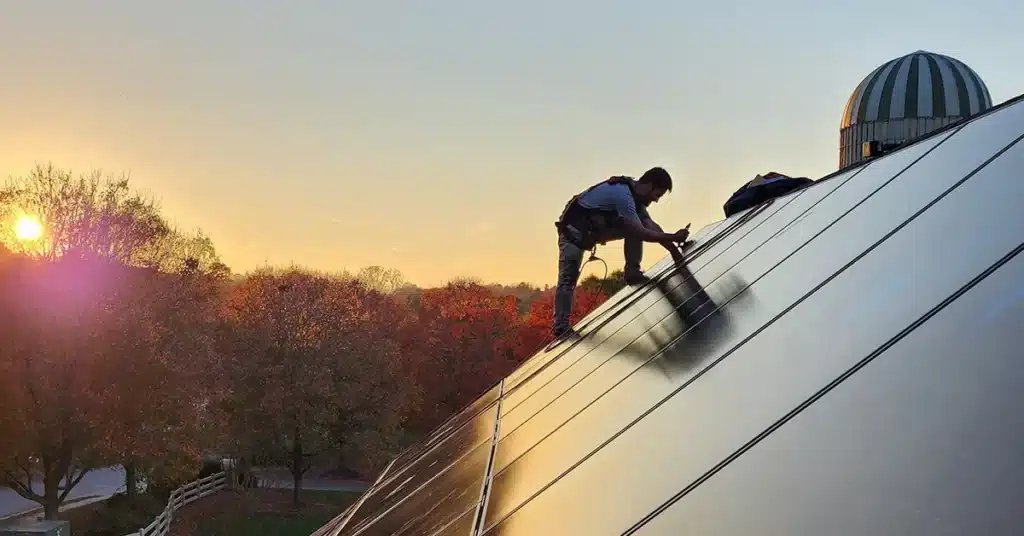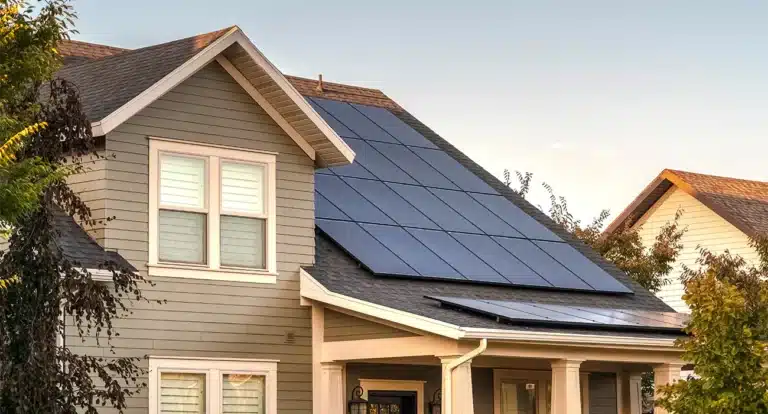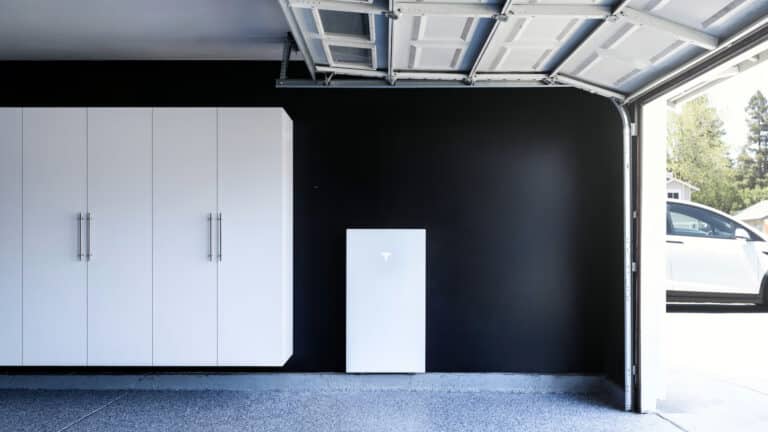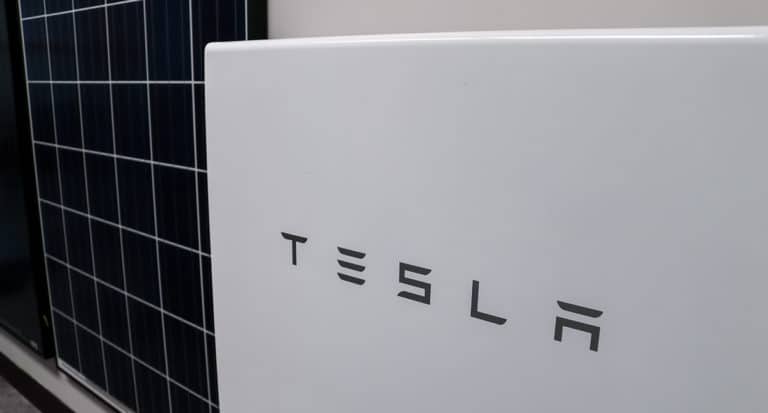How does weather affect solar panels and production?
As sun lovers, we’re over the moon that North Carolina sees an average of 214 sunny days per year. With such an abundance of sunshine, it’s no wonder North Carolina ranks 4th in the country for solar power generation!

But what happens to solar production on those cloudy, rainy, and snowy days in between? Let’s talk about the 5 types of weather we (sometimes) experience in North Carolina and what impact they can have on your solar system:
1. Clouds, Rain, or Thunderstorms
On gloomy days you can expect your solar production to dip, and when rain rolls in, your production will dampen — just like our team’s spirit. However, not all hope is lost! Your panels will still produce some energy when it’s not so sunny and the rain will clean your panels for you.
How to prevent power outages with solar power
The main concern during a thunderstorm is the potential for a grid outage. No one wants to be left without power, especially as more of us are working from home. Incorporating solar + batteries can offer reliable and sustainable energy solutions for your home. Reach out today to explore whether solar + battery storage is the right fit for your energy needs to stay safe and secure this storm season!
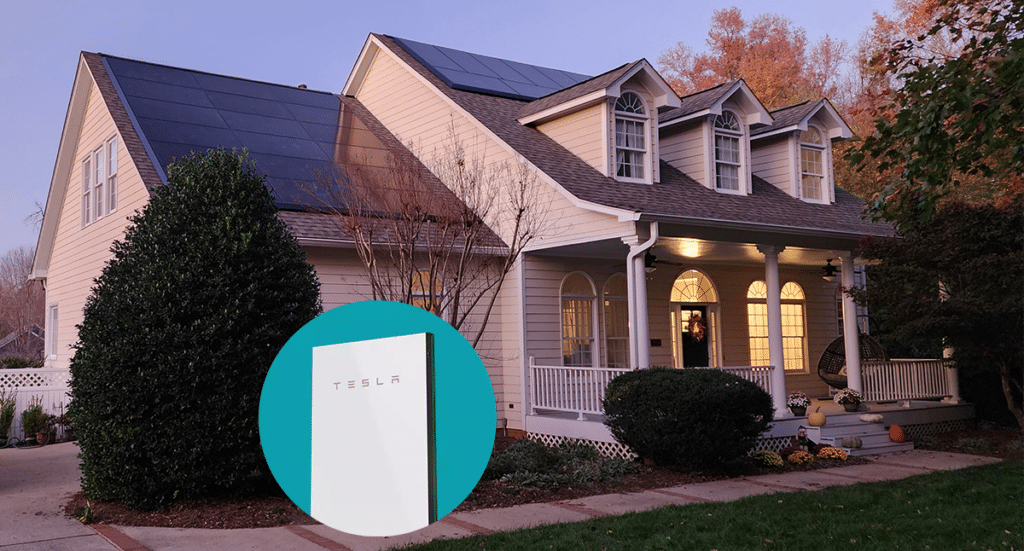
2. Snow
Build up of snow on solar panels will cause a system’s production to standstill until the snow begins to gradually melt. Luckily for us sun-loving North Carolinians, outside of a few mountainous areas, most of North Carolina doesn’t see any significant snow accumulation that would have an effect on your solar panels. Up north where the skies are greyer and snowfall is heavier, snow loads have to be accounted for when engineering the structural design for solar panel systems. Fortunately for us, that’s not an issue here! Even when snow does accumulate on your solar panels, it’s typically such a light amount that the wind will blow it off or it will melt and slide off within a day or two — no need to sweep off your solar panels or worry about production loss!
When we design a solar system, we take into account all the factors that can affect the expected annual solar production, including non-productive days like those affected by snow. So, even if there is a slight decrease in production, we’ve already factored it in to ensure you reach your anticipated annual solar output. You can rest assured that we optimize your solar system to make it as efficient as possible throughout the year. There are a lot of ins and outs to sizing a solar system to meet your energy goals, learn more here →
Solar Fact Fun!
Following a snowstorm, your solar production is set to soar! Because your system is nice and cold, there will be less resistance in its wires, allowing the electricity it generates to flow more easily from your panels to your home.

3. Wind
Wind is definitely something that North Carolina experiences – hello hurricane season! Because solar panels sit a few inches off of your roof, there is the opportunity for wind to come underneath those panels and create an uplift. Fear not, building codes have taken that into account so you can rest assured your system will stay in place.
When we design and permit your solar system, we’re required to install an appropriate amount of secure hardware, or ‘footers’, to anchor your solar panels to your roof. As we move across North Carolina, those codes vary depending on how close to the coast you are. Typically building codes require that your solar system is rated to withstand between 100 and 150 mile-per-hour winds, which covers average hurricane wind speeds. Our general rule of thumb: if your roof is still there, your solar panels are going to be right there with it. 😉
Now entering our 23rd year of installing solar in North Carolina, we’re well aware of the various building codes across the state, so we can ensure that wherever you are, your system meets the appropriate building code.
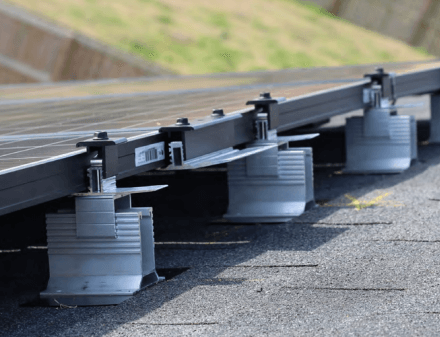
4. Temperature
Contrary to popular belief, solar panels actually perform better in cooler conditions. Surprising, right? When temperatures rise above a certain threshold (around 77°F), the efficiency of solar panels slightly decreases. So, on scorching hot days, solar panels might not perform as efficiently as on cooler sunny days.
Is solar production better in the winter or summer in North Carolina?
Generally, solar production will be higher in the summer in North Carolina, but the difference is pretty insignificant. Longer daylight hours and better sun angle are the two main factors that give summertime a slight leg up in terms of solar production.

5. Hail
Solar panels are engineered to withstand damage from one-inch hail, which is about the size of a quarter. In North Carolina, that’s much larger than the majority of hail we see, so hail damage is really not something to worry about here.
Are the recent wildfires affecting solar panels?
Dust, smog, and other airborne particles can accumulate on the surface of solar panels, reducing their efficiency. This isn’t common in North Carolina, even despite recent wildfires causing lower air quality. If you’re in an area with high dust or pollution, like Arizona, you might need to clean your panels more often.
What to do if you suspect solar panel damage after a storm?
- Check your solar monitoring. This is an easy first step to get some insight on your own. All the systems we install have monitoring through the SolarEdge app, the Tesla Powerwall app, or the SPAN Smart Panel app. So you can log in and you can see if there are any issues going on with your solar that maybe you couldn’t see just by looking at it. If that’s the case, reach out to your solar installer.
- Call your solar installer. If that’s Southern Energy Management, we’ll be happy to take a look and let you know if that is a claim that can be solved through a warranty process through us, or if that’s something you need to reach out to your insurance company about. If we’re your original installer, we’re happy to give you tips on what the best direction is to get those panels back up and running.
- Call your homeowner’s insurance. Your solar system is covered under your homeowner’s insurance policy, so any damage that’s not warranty-related can be paid for through your homeowner’s policy. For added confidence, damage from trees, falling limbs, and other debris is covered by your homeowners insurance while most panels typically carry a 12 year product warranty and a 25 year power output warranty. We will work with you to make sure you have all the information you need to file a claim.
Need help with your solar system?
If your solar system isn’t shining as brightly as it should, get in touch with our awesome repair and maintenance team! The good news: the racking systems we use make it easy to pull those panels off the roof for replacement or repair.
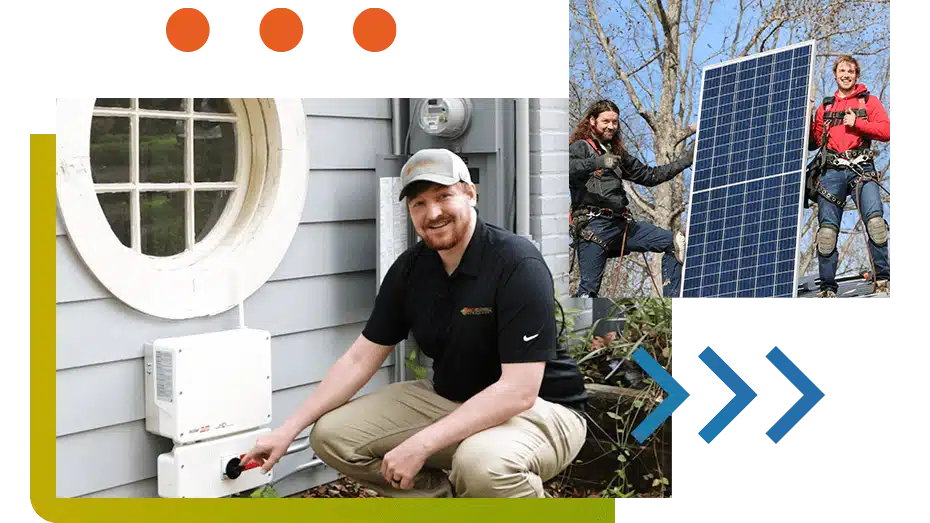
How to check your solar monitoring during or after a storm
Solar monitoring keeps track of how much solar energy your panels are producing and how much energy your home is consuming while helping you monitor how your system is functioning… hence the name! The graphs below show the types of production and consumption patterns you might see on your solar energy monitoring depending on the weather.

Your solar monitoring app will depend on what type of inverter you have, and whether or not you have battery storage. Here’s a breakdown of what you would see if you have a SolarEdge or Tesla Powerwall system:
SolarEdge Monitoring
If you have a system installed with Southern Energy Management, you likely have a SolarEdge inverter. The SolarEdge monitoring portal is going to be a helpful tool for you to analyze exactly how your solar array is operating as you live with the system over the years. This will give you confidence to know that the system stays up and operating, saving you money and creating that positive renewable energy benefit.
Tesla Powerwall Monitoring
We have a dedicated blog and video about preparing for a storm with the Tesla Powerwall. Check those links for a quick look, but if you’re looking for a more general overview of Tesla Powerwall monitoring, check out the video below.
What’s Next?
Weather is certainly an unknown factor, but as we’ve seen, it’s not a big factor to worry about when going solar, because solar systems are designed and installed to withstand the elements that we have here in North Carolina. If you’re concerned about your energy security during stormy weather, reach out. We’d be happy to review your energy goals and provide a free quote for a custom energy solution to get you through the next outage.

